Discover 15 hidden attractions, cool sights, and unusual things to do in Shrewsbury (United Kingdom). Don't miss out on these must-see attractions: Shrewsbury Museum and Art Gallery, The Quarry Park, and Shrewsbury Castle. Also, be sure to include Attingham Park in your itinerary.
Below, you can find the list of the most amazing places you should visit in Shrewsbury (England).
Table of Contents
Shrewsbury Museum and Art Gallery

Museum in Shrewsbury, England. Shrewsbury Museum and Art Gallery was founded in 1835 as the Museum of the Shropshire and North Wales Natural History and Antiquarian Society Society in Dogpole, Shrewsbury, England. In 1853 the collections were moved to Vaughan's Mansion on College Hill, which became known as the Shropshire and North Wales Museum. After 160 years and two subsequent homes the museum returned to Vaughan's Mansion and the Music Hall Complex after a major redevelopment of the site.[1]
Address: The Square, SY1 1LH Shrewsbury
The Quarry Park

Park in Shrewsbury, England. The Quarry is the main recreational park in Shrewsbury, the county town of Shropshire, England. The park was created in 1719 and encompasses 29 acres. With a location within easy walking distance of Shrewsbury town centre, Shrewsbury Sixth Form College and Shrewsbury School, it is the most heavily used public park within the county.[2]
Address: Victoria Avenue, SY 1 1 Shrewsbury
Shrewsbury Castle
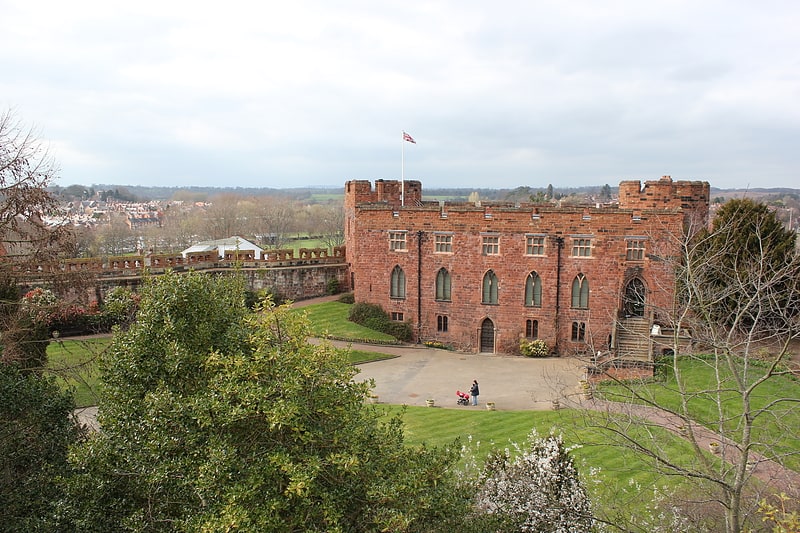
11th-century castle and military museum. Shrewsbury Castle is a red sandstone castle in Shrewsbury, Shropshire, England. It stands on a hill in the neck of the meander of the River Severn on which the town originally developed. The castle, directly above Shrewsbury railway station, is a Grade I listed building.[3]
Attingham Park
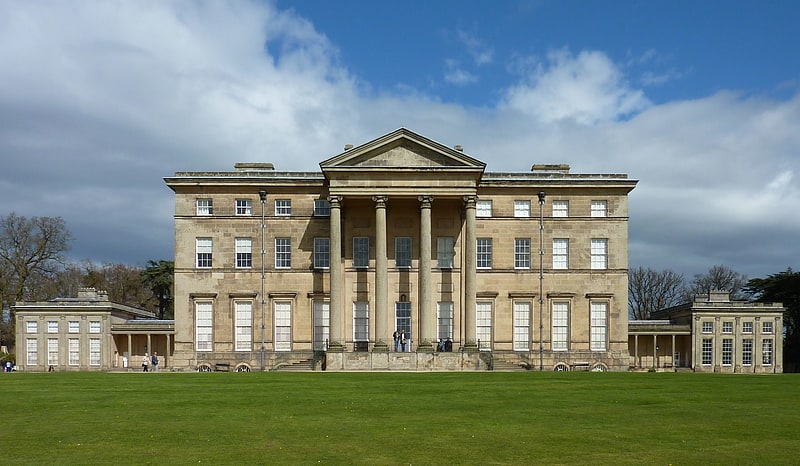
Building. Attingham Park is an English country house and estate in Shropshire. Located near the village of Atcham, on the B4380 Shrewsbury to Wellington road. It is owned by the National Trust. It is a Grade I listed building.
Attingham Park was built in 1785 for Noel Hill, 1st Baron Berwick. Lord Berwick, a former MP for Shropshire, received his title in 1784 during the premiership of William Pitt the Younger, during which he had been instrumental in the reorganisation of the East India Company. Lord Berwick already owned a house on the site of Attingham Park called Tern Hall, but with money he received along with his title he commissioned the architect George Steuart to design a new and grander house to be built around the original hall. The new country house encompassed the old property entirely, and once completed it was given the name Attingham Hall.
The Estate comprises roughly 4,000 acres, but during the early 1800s extended to twice that amount at 8,000 acres. The extensive 640 acres parkland and gardens of Attingham have a Grade II* Listed status. Over 470,000 people visited the house in 2017/18, placing it as the fourth most popular National Trust house.
Across the 640 acre parkland there are five Grade II* listed buildings, including the stable block, the Tern Lodge toll house which can be seen on the B4380, and two bridges that span the River Tern. There are also twelve Grade II listed structures including the retaining walls of the estate, the bee house, the ice house, the walled garden, the ha-ha, which can be seen in the front of the mansion, and the Home Farm.[4]
New Meadow
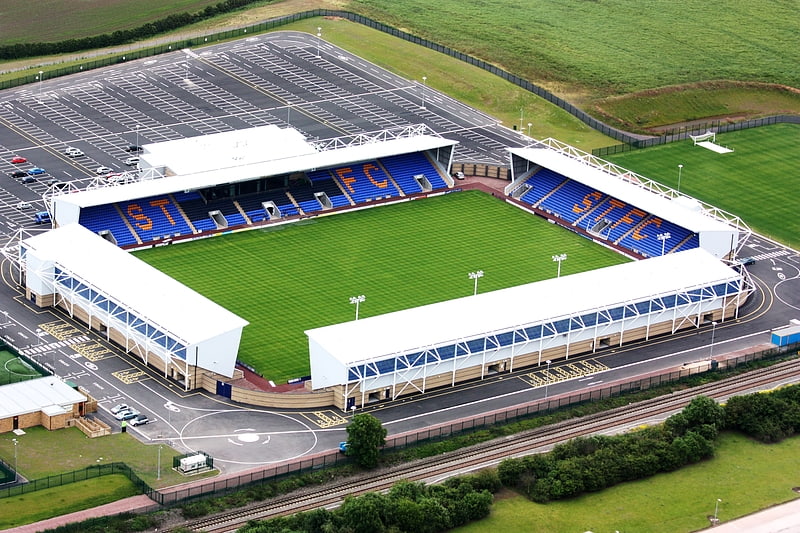
Stadium in Shrewsbury, England. New Meadow, also known as Montgomery Waters Meadow for sponsorship purposes, is a stadium situated on the southern outskirts of Shrewsbury, Shropshire, between the districts of Meole Brace and Sutton Farm, and close to the A5. It serves the home ground of English football club Shrewsbury Town.
It was completed in the summer of 2007, in time for the 2007–08 English football season, and was built to replace the Gay Meadow, Shrewsbury Town's home stadium since 1910.[5]
Address: Oteley Rd., SY2 6ST Shrewsbury
St Chad's Church
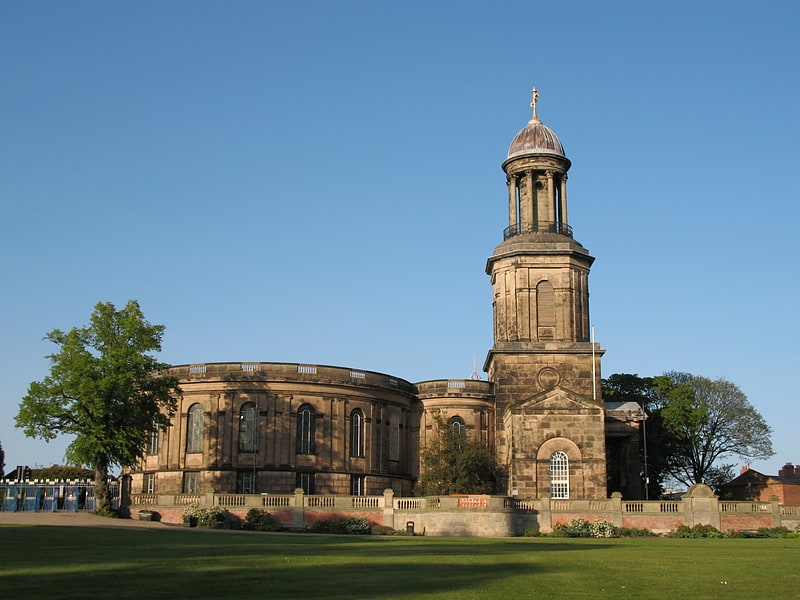
Building in Shrewsbury, England. St Chad's Church occupies a prominent position in Shrewsbury, the county town of Shropshire. The current church building was built in 1792, and with its distinctive round shape and high tower it is a well-known landmark in the town. It faces The Quarry area of parkland, which slopes down to the River Severn. The church is a Grade I listed building.
The motto of the church is "open doors, open hearts, and open minds". This indicates the aspiration of the church to be a welcoming church, involved in the community, and on a collective journey seeking after God.
Charles Darwin was baptised in St Chad's church in 1809, and as a young boy attended the church with his mother Susannah.
In 2010, the church became a member of the Greater Churches Group.[6]
Address: 1 St Chad's Terrace, SY1 1JX Shrewsbury
Shrewsbury Cathedral
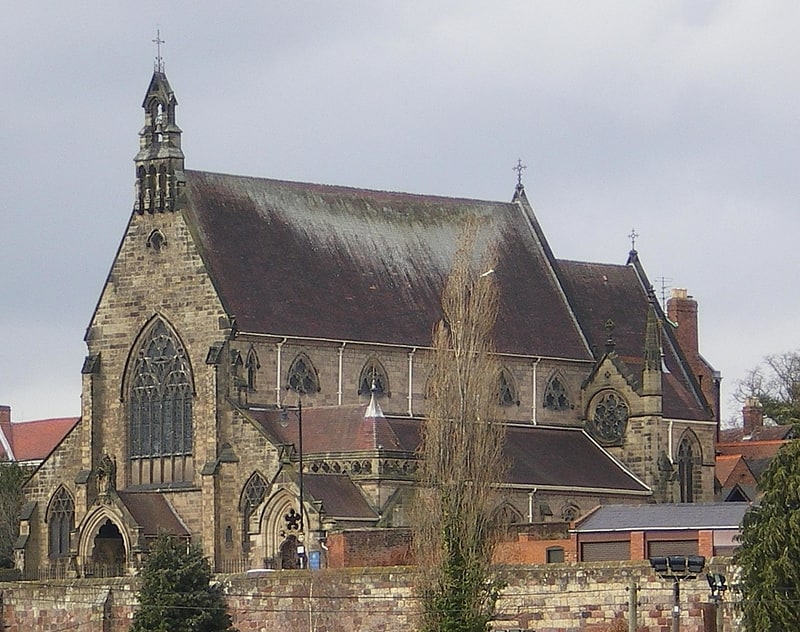
Spireless Roman Catholic cathedral. The Cathedral Church of Our Lady Help of Christians and Saint Peter of Alcantara, commonly known as Shrewsbury Cathedral, is a Roman Catholic cathedral in Shrewsbury, England. It is the seat of the Roman Catholic Bishop of Shrewsbury and mother church of the Diocese of Shrewsbury, which covers the historic counties of Shropshire and Cheshire.
The cathedral is particularly notable as being the only cathedral in the county. Unlike most other English counties and county towns, neither Shropshire nor Shrewsbury has a Church of England cathedral.[7]
Address: 11 Belmont, SY1 1TE Shrewsbury
Shrewsbury Abbey
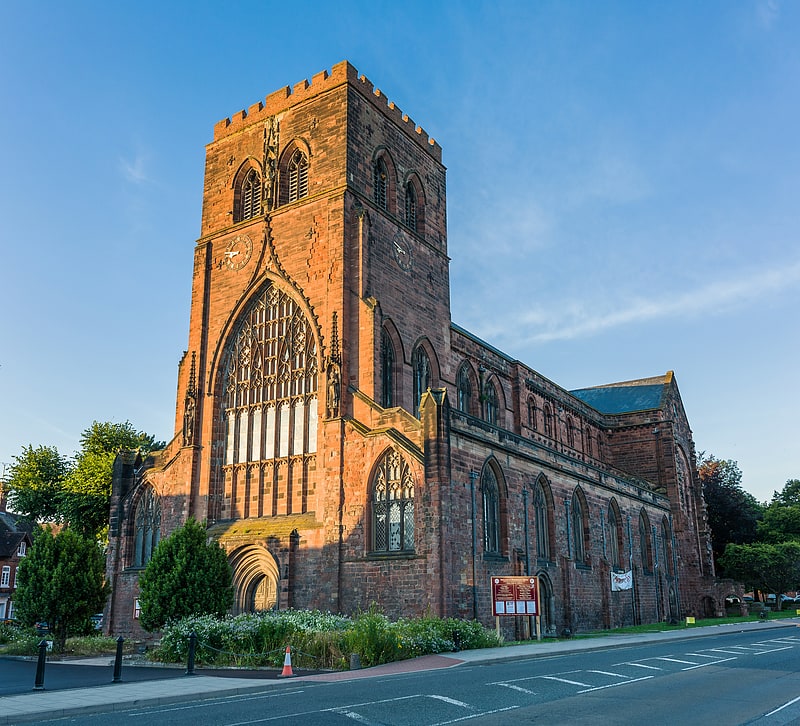
11th-century abbey and historic displays. The Abbey Church of Saint Peter and Saint Paul, Shrewsbury is an ancient foundation in Shrewsbury, the county town of Shropshire, England.
The Abbey was founded in 1083 as a Benedictine monastery by the Norman Earl of Shrewsbury, Roger de Montgomery. It grew to be one of the most important and influential abbeys in England, and an important centre of pilgrimage. Although much of the Abbey was destroyed in the 16th century, the nave survived as a parish church, and today serves as the mother church for the Parish of Holy Cross.
The Abbey is a Grade I listed building and is a member of the Greater Churches Group. It is located to the east of Shrewsbury town centre, near the English Bridge, and is surrounded by a triangular area which is today referred to as Abbey Foregate.[8]
English Bridge
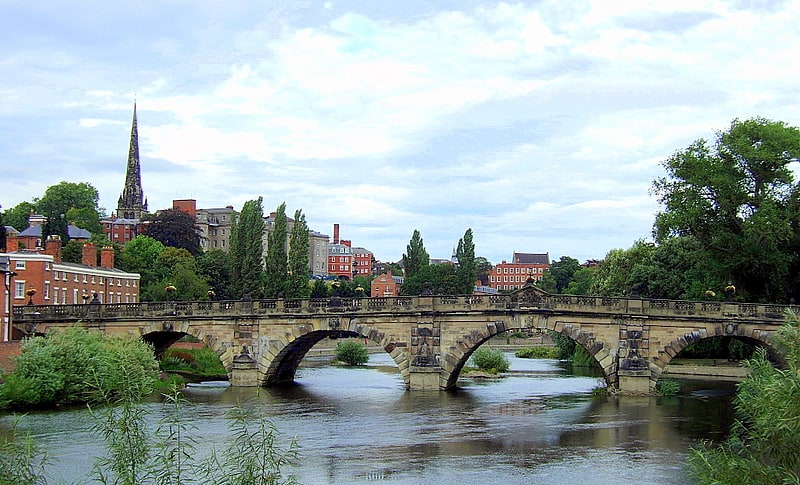
Stone bridge in Shrewsbury, England. The English Bridge is a masonry arch viaduct, crossing the River Severn in Shrewsbury, Shropshire. The present bridge is a 1926 rebuilding and widening of John Gwynn's design, completed in 1774. A bridge is known to have stood at this spot since at least Norman times. Historically, it was known as the "Stone Bridge". It is a Grade II* listed building.
The original Norman bridge consisted of five arches and a timber causeway. A large tower stood on the East bank, housing a gate and a drawbridge. The bridge also supported several shops and houses. Building work on Gwynn's replacement bridge started on 29 June 1769, and comprised seven semicircular arches, 400 feet (120 m) long. This bridge cost £16,000. The 55-foot (17 m) span central arch was built high, to provide headroom to watercraft, but this resulted in steep approaches.
As a result, a new design was put forward in 1921 by Arthur W. Ward, the Borough Surveyor. This lowered all the arches, converting the central one into a segmental arch, reducing the height of the roadway by 5 feet (1.5 m). The new bridge was to be 50 feet (15 m) wide, more than twice as wide as Gwynn's structure (of 23 and a half feet width). It cost £86,000 and was formally opened on 26 October 1927 by Queen Mary, although it had been completed the previous year. Ward's bridge reused the old masonry, each stone carefully numbered, as well as a quantity of new stonework. Concrete was used to 'saddle' the arches and in the foundations.
The bridge is one of two bridges carrying the main east-west route over the Severn as it loops around Shrewsbury; the Welsh Bridge is its counterpart on the other side of the town. Despite the names, both bridges are in England, but the Welsh Bridge is on the side closer to Wales.
Thomas Telford's Holyhead Road, dating from 1815 and connecting London to the main sea-crossing to Ireland, used the English Bridge to cross the Severn here. The road's modern successor, the A5, now bypasses Shrewsbury and the bridge's main role today is to connect the centre of Shrewsbury with the Belle Vue and Abbey Foregate areas of the town.[9]
Address: Wyle Cop, SY1 Shrewsbury
St Mary's Church

Church in Shrewsbury, England. St Mary's Church is a redundant Anglican church in St Mary's Place, Shrewsbury, Shropshire, England. It is recorded in the National Heritage List for England as a designated Grade I listed building, and is under the care of the Churches Conservation Trust, the Trust designated St Mary's as its first Conservation Church in 2015. It is the largest church in Shrewsbury. Clifton-Taylor includes the church in his list of 'best' English parish churches.[10]
Address: St Mary's Place, SY1 1EF Shrewsbury
Porthill Bridge
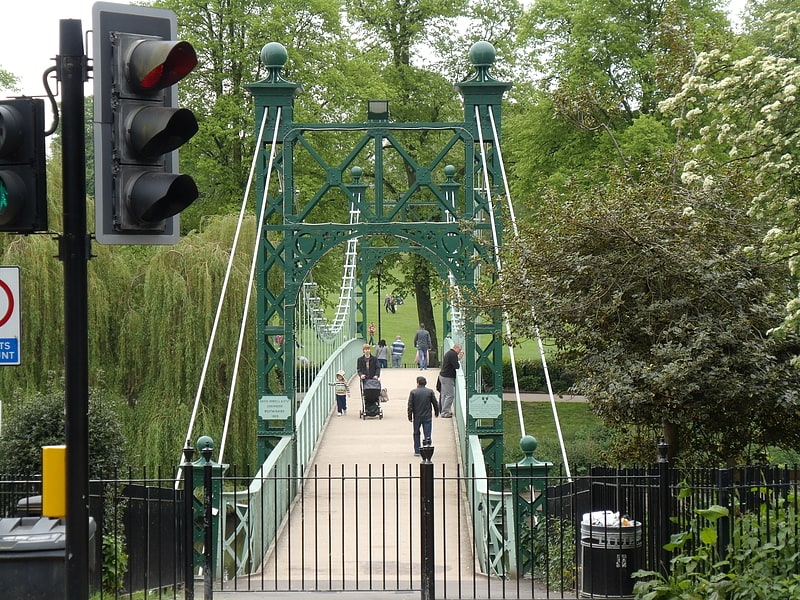
Suspension bridge in the United Kingdom. Porthill Bridge, also often referred to as Port Hill Footbridge, is a suspension bridge for pedestrians crossing the River Severn in Shrewsbury, Shropshire, England.
It connects Porthill with the Quarry and the town centre. Next to it on the Porthill side is the Boathouse public house and Becks Field - both Quarry Park and Becks Field are extensive open green spaces largely preserved from building by their propensity to flood. Porthill Bridge experiences significant vibration, even when few people are crossing it - and has done since it was installed. Local pedestrians mostly accept this eccentricity as part of the bridge's charm.
A ferry operated here until the bridge was built in 1922 by David Rowell & Co. One of the posts to which the cable was attached is still visible on the north bank of the river just a few metres west of the crossing. The bridge was opened on 18 January 1923. £2,000 of the bridge's total £2,600 cost was paid for by the Shropshire Horticultural Society.
From March to July 2012 the bridge was closed for refurbishment, which included repainting the whole bridge and replacing the timber deck, costing £575,000. The bridge was temporarily replaced with a passenger ferry between the Quarry and the Boat House pub with an adult single fare of 50p.[11]
The Quantum Leap
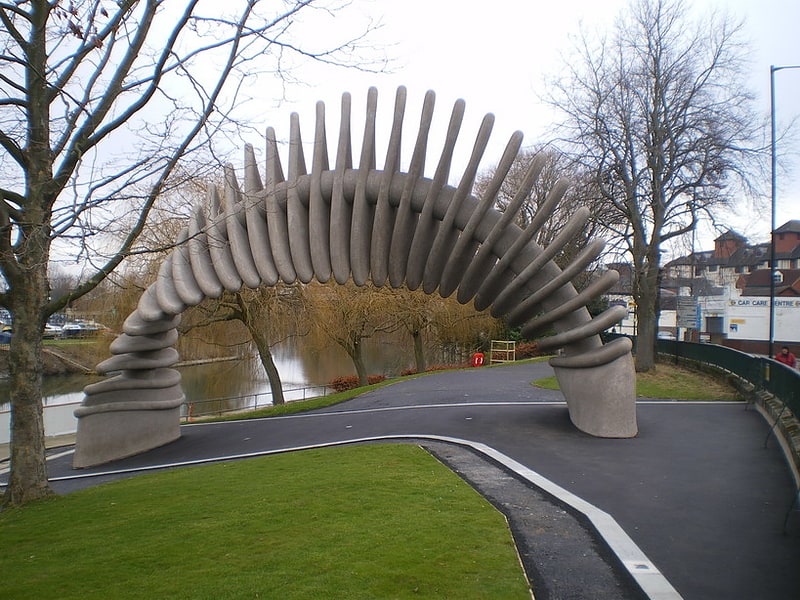
Sculpture created in 2009. The Quantum Leap is a sculpture situated next to the River Severn in Shrewsbury, Shropshire, England. It was created to celebrate the bicentenary of the birth of evolutionist Charles Darwin, who was born in the town in 1809. The sculpture was unveiled on 8 October 2009 by Randal Keynes, a great-great-grandson of Darwin.[12]
Welsh Bridge

Bridge in Shrewsbury, England. The Welsh Bridge is a masonry arch viaduct in the town of Shrewsbury, England, which crosses the River Severn. It connects Frankwell with the town centre. It is a Grade II* listed building.
The bridge was designed and built from 1793 to 1795 by John Tilley and John Carline (whose namesake father was a mason on the English Bridge), who had built Montford Bridge for Thomas Telford. It replaced the medieval St George's Bridge. Four of the arches span 43 feet 4 inches, while the fifth and central arch is 46 feet 2 inches. The bridge is 30 feet wide, and built from Grinshill sandstone. In total it is 266 feet long. It was completed in 1795 at a cost of £8,000.
On the south end of the bridge, on the junction with Victoria Avenue, one of the parapets of the bridge has the words "Commit No Nuisance" chiselled into the stone. This is an archaic injunction not to urinate in public.[13]
Old Market Hall
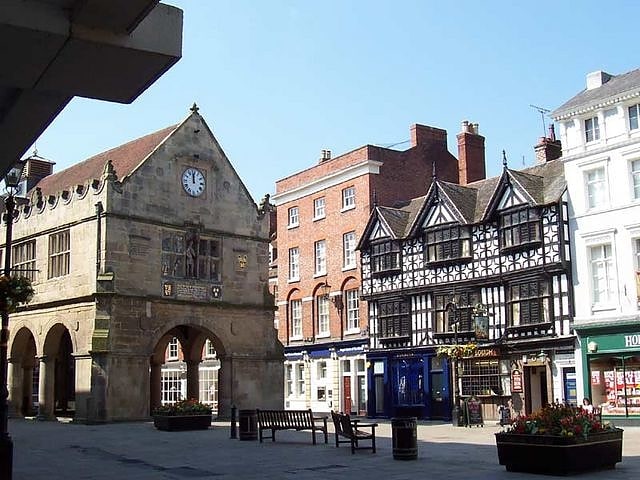
Movie theater in Shrewsbury, England. The Old Market Hall is an Elizabethan building situated in the town centre of Shrewsbury, the county town of Shropshire, England. It is a Grade I listed building.[14]
Address: Claremont St, SY1 1QG Shrewsbury
Kingsland Bridge
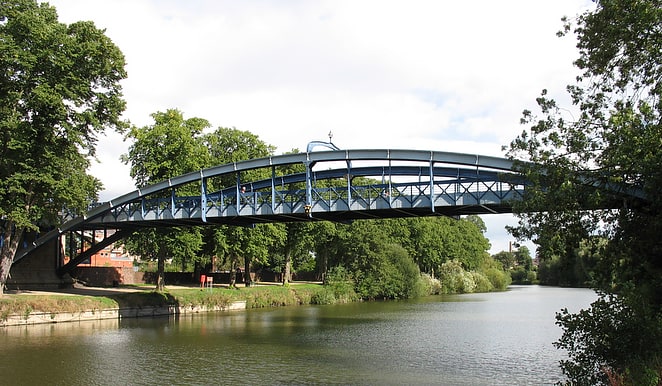
Arch bridge in Shrewsbury, England. Kingsland Bridge is a privately owned toll bridge, spanning the River Severn in Shrewsbury, Shropshire. It is located near Shrewsbury School and the cost for cars to cross is 20p. It is a Grade II listed building.[15]